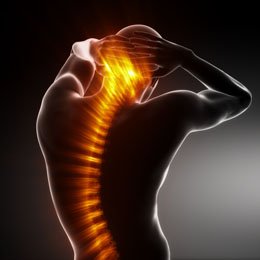An individual may not feel any painful symptom of bone spurs on spine, however, with advancement in the condition, painful symptoms may develop which may aggravate. The following article provides information about the various symptoms and treatment options available for this condition.

As our body ages, it goes through several physical changes. A majority of people tend to develop various ailments as they age. One of the complications that may develop in old age is that of bone spurs on spine. Bone spurs are painless, and hence, it is very difficult to detect their presence in the initial days. However, later, when bone spurs begin to compress and push through nerves and bones, they may be painful. In such aggravated cases, medical care is absolutely important.
Symptoms
Knowing the symptoms of this condition may help one to determine which treatment option to choose. In fact, the symptoms of bone spurs on any part of the body be it the knees, heels, or spine, lead to severe pain in the advanced stages of this complication.
Difficulty in Swallowing
If you see the structure of cervical spine, you will observe that the bones in the cervical spine unlike the rest of the spine, point inward. Hence, when this condition develops, there may be pressure on the esophagus and airways. Any type of extra pressure on the esophagus may lead to difficulty in swallowing. Further, pressure on the airways may lead to problems in breathing.
Dull Pain
A feeling of dull pain in the neck or against the muscles, is a definite sign of this condition. The pain may aggravate when one walks or stands. The pain may often spread to the shoulders, and in such cases, shoulder bone spur develops. It is a painful condition if not treated early.
Problems in the Arms
The eight cervical nerves that emerge from the cervical spine control various functions of the brain and arms. Bone spurs that develop on the spine may compress these nerves and cause problems in the arms. Pain in the arms due to these spurs are similar to the pain in the herniated disk. A feeling of numbness and weakness which develops in this condition may lead to less muscular strength. Moreover, weakened muscles may lead to loss of certain range of movements.
Wear and Tear of Cervical Spine
Spinal stenosis is the medical name given to the wear and tear of cervical spine. This condition may lead to wear and tear in the cervical spine as they cause the spinal canal to be narrower. Often, pain due to bone spurs doesn't spread to the legs, but, in cases of spinal stenosis, there may be weakness in legs and numbness in arms and legs.
Treatment
Mild or moderate cases of nerve compression may be treated by medication like anti-inflammatory medicines, several muscle relaxants, and pain medications. These medications may be administered for a period of 4 to 6 weeks. Since any activity may aggravate joint inflammation, complete rest during the treatment procedure is essential. After 1-2 weeks, physical therapy exercises and chiropractic treatment may be given to get rid of the pain.
These physical exercises help in improving flexibility and strength of muscles of neck and various postures. For therapeutic purposes various medications like cortisone etc., are given in the form of injections. They help to get rid of pain due to joint swelling and spinal pain. Surgery for this condition is considered to be effective in relieving the pain and several other neurological symptoms.
In the recent years, majority of patients who have undergone surgery to treat this condition have experienced better results. In the surgery, the spurs on spine and thickened ligaments which cause nerve compression are removed. Medical complications like high blood pressure, aging, diabetes, etc. may increase the risk of surgical procedures, and hence, they must only be used after proper consultation with a medical expert.


 As our body ages, it goes through several physical changes. A majority of people tend to develop various ailments as they age. One of the complications that may develop in old age is that of bone spurs on spine. Bone spurs are painless, and hence, it is very difficult to detect their presence in the initial days. However, later, when bone spurs begin to compress and push through nerves and bones, they may be painful. In such aggravated cases, medical care is absolutely important.
As our body ages, it goes through several physical changes. A majority of people tend to develop various ailments as they age. One of the complications that may develop in old age is that of bone spurs on spine. Bone spurs are painless, and hence, it is very difficult to detect their presence in the initial days. However, later, when bone spurs begin to compress and push through nerves and bones, they may be painful. In such aggravated cases, medical care is absolutely important.